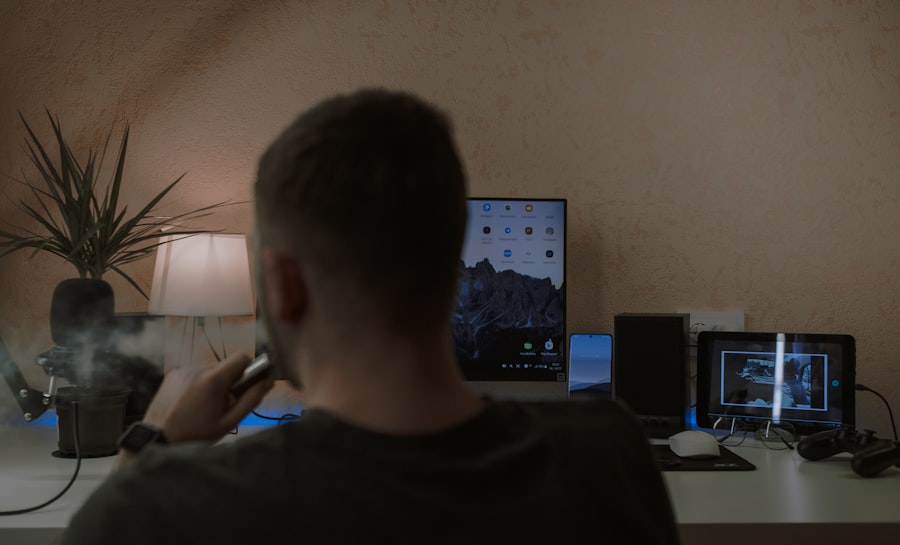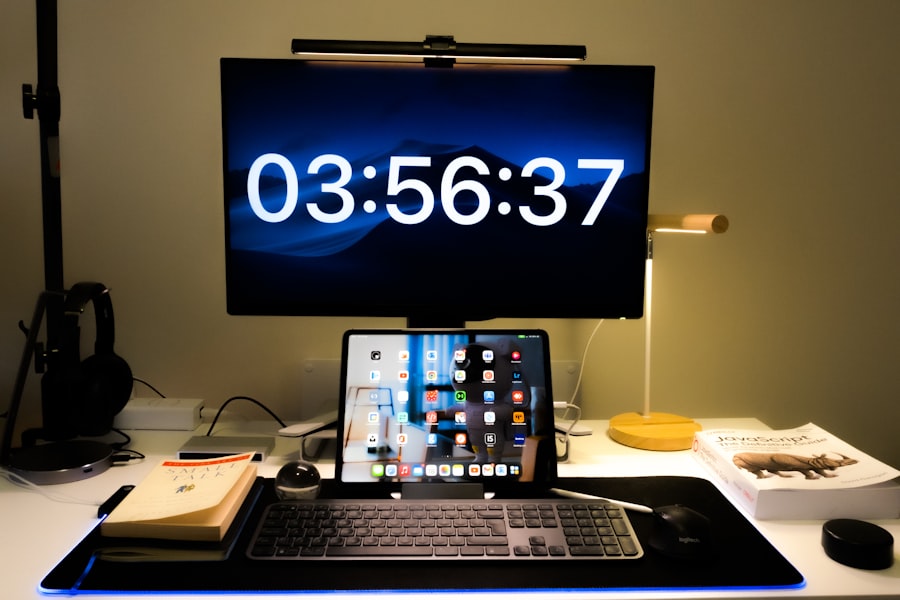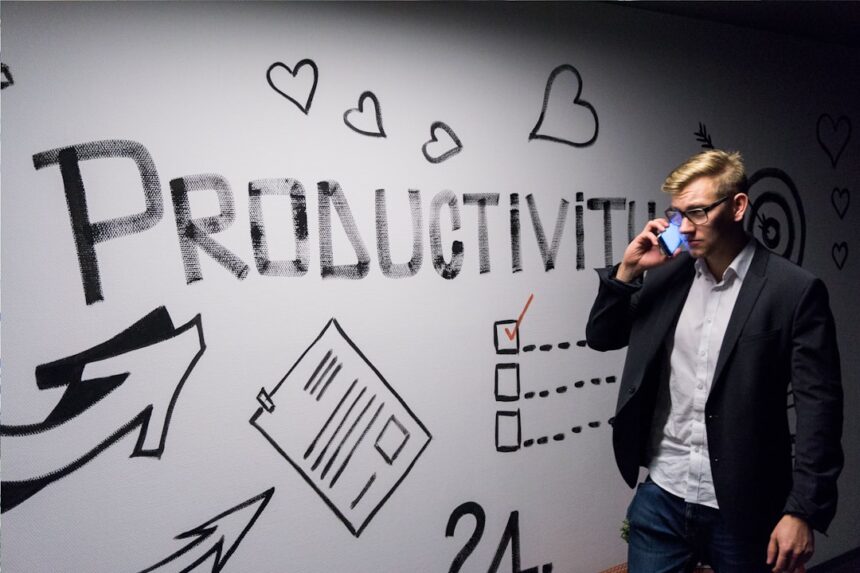In the fast-paced world of productivity, the concept of intentional friction may seem counterintuitive. You might wonder why you would want to introduce any form of friction into your workflow when the goal is often to streamline processes and enhance efficiency. However, intentional friction serves a purpose; it acts as a catalyst for deeper thinking, creativity, and ultimately, better decision-making.
By introducing small obstacles or challenges into your routine, you can create a space that encourages reflection and critical analysis, allowing you to engage more meaningfully with your tasks. When you think about friction in this context, consider it as a tool for growth rather than a hindrance. It can help you break free from autopilot mode, where tasks are completed without much thought or engagement.
By intentionally creating friction, you can prompt yourself to pause and evaluate your actions, leading to more thoughtful outcomes. This approach can be particularly beneficial in environments where quick decisions are often made without sufficient consideration of their long-term implications.
Key Takeaways
- Intentional friction can be a useful tool for improving productivity and focus in the workplace.
- Identifying areas for improvement is crucial in implementing intentional friction effectively.
- Implementing friction hacks in your workflow can help create a more structured and efficient work environment.
- Tools and techniques such as time-blocking and task prioritization can be valuable in creating intentional friction.
- Overcoming resistance to friction requires clear communication and understanding of the benefits it can bring to the work process.
Identifying Areas for Improvement
To effectively implement intentional friction in your workflow, the first step is to identify areas that could benefit from this approach. Take a moment to reflect on your daily routines and tasks. Are there specific activities where you find yourself rushing through without much thought?
Perhaps you notice that certain decisions are made on a whim, leading to outcomes that don’t align with your goals. By pinpointing these areas, you can begin to understand where introducing friction could lead to more deliberate and thoughtful engagement. You might also consider the feedback you receive from colleagues or supervisors.
Are there recurring themes in their suggestions for improvement? If they mention that your work lacks depth or that you often overlook critical details, this could be a sign that you need to introduce some friction into your process. By actively seeking out these insights, you can create a clearer picture of where intentional friction can be most beneficial in enhancing your overall productivity and effectiveness.
Implementing Friction Hacks in Your Workflow

Once you’ve identified the areas ripe for improvement, it’s time to implement friction hacks into your workflow. These hacks can take various forms, depending on your specific needs and preferences. For instance, you might decide to set aside dedicated time for brainstorming before diving into a project.
This pause can serve as a friction point that encourages you to explore different angles and ideas before settling on a course of action. Another effective strategy is to introduce checkpoints throughout your work process. For example, after completing a significant task, take a moment to review what you’ve done critically.
Ask yourself questions like: What went well? What could have been improved? This reflective practice not only creates friction but also fosters a culture of continuous improvement in your work habits.
By making these small adjustments, you can cultivate a more thoughtful approach to your tasks and projects.
Tools and Techniques for Intentional Friction
| Tool/Technique | Description |
|---|---|
| Obstacle course | A physical challenge designed to create intentional friction and promote problem-solving skills. |
| Debate sessions | Structured discussions where participants are encouraged to argue different viewpoints to create cognitive friction. |
| Red teaming | A practice where a group of individuals are assigned to simulate adversarial attacks to test a system’s defenses. |
| Scenario planning | A strategic planning method that involves creating and analyzing different scenarios to anticipate potential challenges. |
Incorporating tools and techniques designed to create intentional friction can significantly enhance your productivity. One such tool is the Pomodoro Technique, which involves working in focused bursts followed by short breaks. This method introduces a natural rhythm of work and rest, allowing you to reflect on your progress during breaks and assess whether you’re on track with your goals.
Another technique is the use of checklists or frameworks that require you to think critically about each step of your process. For instance, if you’re working on a project proposal, create a checklist that prompts you to consider various aspects such as audience needs, potential challenges, and alternative solutions. This structured approach introduces friction by forcing you to slow down and think through each element thoroughly before moving forward.
Overcoming Resistance to Friction
While the benefits of intentional friction are clear, you may encounter resistance when trying to implement these changes in your workflow. It’s natural to feel hesitant about introducing obstacles into your routine, especially if you’re accustomed to a fast-paced environment where speed is prioritized over depth. Acknowledge this resistance as part of the process and remind yourself that the goal is not to create unnecessary hurdles but rather to foster a more thoughtful approach to your work.
To overcome this resistance, start small. Introduce one or two friction hacks at a time rather than overhauling your entire workflow all at once. This gradual approach allows you to adjust without feeling overwhelmed.
Additionally, celebrate small wins along the way; recognizing the positive impact of these changes can motivate you to continue embracing intentional friction in your work.
Maximizing the Benefits of Intentional Friction

To truly maximize the benefits of intentional friction, it’s essential to cultivate an environment that supports this mindset. Surround yourself with individuals who value thoughtful engagement and critical thinking. Collaborating with colleagues who share this perspective can reinforce your commitment to introducing friction into your workflow and provide valuable insights into how they navigate similar challenges.
Moreover, regularly assess the impact of the friction hacks you’ve implemented. Are they helping you achieve deeper insights? Are you making more informed decisions?
By evaluating their effectiveness, you can refine your approach and ensure that the friction you’re introducing continues to serve its intended purpose.
Creating a Friction-Free Environment
While intentional friction has its advantages, it’s equally important to recognize when a friction-free environment is necessary for certain tasks or projects. Some activities require speed and efficiency, particularly those that involve routine or repetitive tasks. In these cases, removing unnecessary obstacles can help you maintain momentum and productivity.
To create a friction-free environment when needed, streamline processes by eliminating redundant steps or automating repetitive tasks. This balance allows you to switch between friction and efficiency based on the demands of the task at hand, ensuring that you’re always working in the most effective manner possible.
Balancing Friction and Efficiency
Striking the right balance between friction and efficiency is crucial for maintaining productivity without sacrificing quality. You may find that certain tasks benefit from a more friction-heavy approach while others thrive in an efficient environment. The key is to remain adaptable; assess each task individually and determine whether introducing friction will enhance or hinder your progress.
Consider using a flexible framework that allows you to toggle between different levels of friction based on the complexity of the task. For example, high-stakes projects may warrant more intentional friction through brainstorming sessions and critical reviews, while routine tasks might benefit from streamlined processes that allow for quick completion.
Measuring the Impact of Intentional Friction
To ensure that your efforts in implementing intentional friction are yielding positive results, it’s essential to measure their impact over time. Keep track of key performance indicators related to your productivity and decision-making processes. Are you noticing improvements in the quality of your work?
Are you feeling more engaged with your tasks? By quantifying these changes, you can gain valuable insights into how intentional friction is influencing your overall performance. Additionally, consider seeking feedback from peers or supervisors regarding any noticeable changes in your work habits or outcomes.
Their perspectives can provide further validation of the effectiveness of your friction hacks and help you identify areas for further refinement.
Adapting Friction Hacks to Different Work Styles
Recognizing that everyone has unique work styles is vital when implementing intentional friction strategies. What works for one person may not resonate with another; therefore, it’s essential to adapt your approaches based on individual preferences and strengths. Take time to experiment with different friction hacks and observe how they align with your natural workflow.
For instance, if you’re someone who thrives on visual organization, consider using mind maps or visual frameworks as a means of introducing friction into your brainstorming process. Alternatively, if you’re more analytical, structured checklists may serve as effective tools for prompting critical thinking during project execution.
Sustaining Productivity with Intentional Friction
Sustaining productivity through intentional friction requires ongoing commitment and adaptability. As you continue to refine your approach, remain open to new ideas and techniques that may enhance your workflow further. Regularly revisit your identified areas for improvement and assess whether additional friction hacks could be beneficial as your projects evolve.
Ultimately, embracing intentional friction as part of your productivity strategy can lead to greater engagement with your work and improved outcomes over time. By balancing moments of reflection with efficient execution, you’ll cultivate a dynamic workflow that fosters both creativity and effectiveness in achieving your goals.
In the realm of productivity hacks, the concept of intentional friction is gaining traction as a novel approach to enhancing focus and efficiency. This method involves deliberately introducing small obstacles to streamline processes and encourage more mindful engagement with tasks.
This piece delves into various techniques that can be employed to optimize productivity by leveraging intentional friction. To learn more, check out the article on Productive Patty.
WATCH NOW! Nietzsche: Destroy Your Laziness Before It Destroys Your Career
FAQs
What is intentional friction productivity hack?
Intentional friction productivity hack is a strategy that involves deliberately creating obstacles or challenges in order to increase focus, creativity, and productivity. This can include setting time limits, using specific tools or software, or creating physical barriers to encourage problem-solving and innovation.
How does intentional friction productivity hack work?
Intentional friction productivity hack works by forcing individuals to think more critically and creatively in order to overcome the obstacles or challenges that have been intentionally created. This can lead to increased focus, improved problem-solving skills, and ultimately higher levels of productivity.
What are some examples of intentional friction productivity hacks?
Examples of intentional friction productivity hacks include using distraction-blocking software, setting strict time limits for tasks, working in a cluttered or noisy environment, or using unconventional tools or methods to complete a task. These intentional obstacles are designed to stimulate the brain and encourage innovative thinking.
What are the benefits of intentional friction productivity hack?
The benefits of intentional friction productivity hack include increased focus, improved problem-solving skills, enhanced creativity, and ultimately higher levels of productivity. By intentionally creating obstacles, individuals are forced to think outside the box and find new ways to accomplish tasks, leading to greater efficiency and innovation.
Are there any potential drawbacks to intentional friction productivity hack?
While intentional friction productivity hack can be effective for some individuals, it may not work for everyone. Some people may find it frustrating or demotivating to have intentional obstacles in their way, and it could lead to decreased productivity or increased stress. It’s important to consider individual preferences and work styles when implementing intentional friction productivity hacks.




